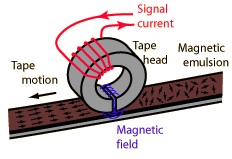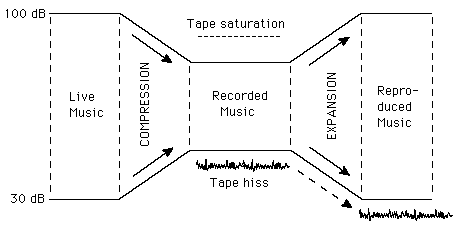Noise Reduction and Tape Hiss
The fidelity of a tape recording is limited by "tape hiss", high frequency random noise resulting from the fact that the magnetizations of the oxide particles of the magnetic emulsion do not add to exactly zero even in the absence of a recorded signal. Noise reduction systems like the Dolby and dbx systems help to overcome this by pre-emphasis of high frequency, low-intensity music signals upon recording so that they, along with the tape hiss, can be de-emphasized upon playback.

Sound reproduction concepts
Tape recording concepts

